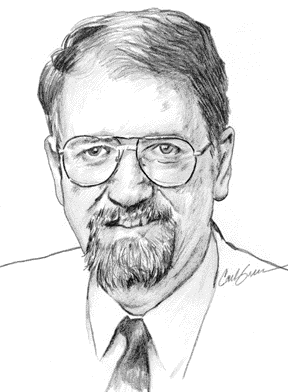
ILLUSTRATION BY CARL GREEN
For those who haven't seen your work in STOCKS & COMMODITIES, tell me about yourself.
I have a doctorate in psychology and I've been working with traders since 1982. I consider myself both a modeler and a coach.
What's a modeler?
A modeler is someone who finds people who can do something well and then determines what they do in common. I use neurolinguistic programming, which I call the science of modeling, to do that. You don't want to model any single individual, because then you'll know all about their idiosyncrasies. You want to know what a number of successful people have in common. When you know that, your model usually works for everyone.
Give me an example.
When most people read Jack Schwager's Market Wizards, they usually look for traders' secrets -- their methods for trading. They are probably disappointed when they realize that the details of those methods aren't in the book. In fact, those interviewed all have different systems, which led me to conclude that their systems weren't that important. Instead, my philosophy in working with those traders or in going through the book is to look for what they all have in common. That's where the real "secrets" are!
What did they have in common?
They had in common low-risk ideas, money management -- which I now refer to as position sizing -- and discipline. There is tremendous value when you use that approach, and I've done modeling in all three areas, plus the area of acquiring wealth.
What do you do as a coach?
A coach is someone who finds talented players -- in this case, traders -- and teaches them the fundamentals -- the result of the modeling work -- and then makes sure those traders follow the fundamentals. It's interesting that trading reflects human performance as much as any athletic endeavor. Almost every top athlete will have a coach, but few traders have coaches.
How did you become interested in working with traders?
When I first started, I was a dismal trader. Twice I had periods when I lost everything, and the second time, I went into debt. Fortunately, after that, I realized those results were way beyond random. I realized it couldn't be bad luck. It had to be me. I had to find out what I was doing wrong.
So how did you get involved with other traders?
As I started doing research and working to solve various problems, the traders I was doing research with started asking me for help on how they could improve. And most of them were good traders. And after I helped them for a while, I decided I liked coaching better. As a result, my trading is now primarily that of investing with traders I've helped develop, and those results have been super.
During the time you've been a trading coach, have there been certain recurring themes that led you to believe that there are consistent reasons for success and failure?
There are consistent reasons, and they are common-enough problems, things like not pulling the trigger or being a gambler or needing to be right. I wrote a couple of articles for S&C on those topics.
The Holy Grail does exist, but it is an inner search. And once you've undertaken that quest, learn position sizing strategies. When you can understand how position sizing applies to your trading system, then you have a chance. -- Van K. Tharp
Excerpted from an article originally published in the April 1999 issue of Technical Analysis of STOCKS & COMMODITIES magazine. All rights reserved. © Copyright 1999, Technical Analysis, Inc.